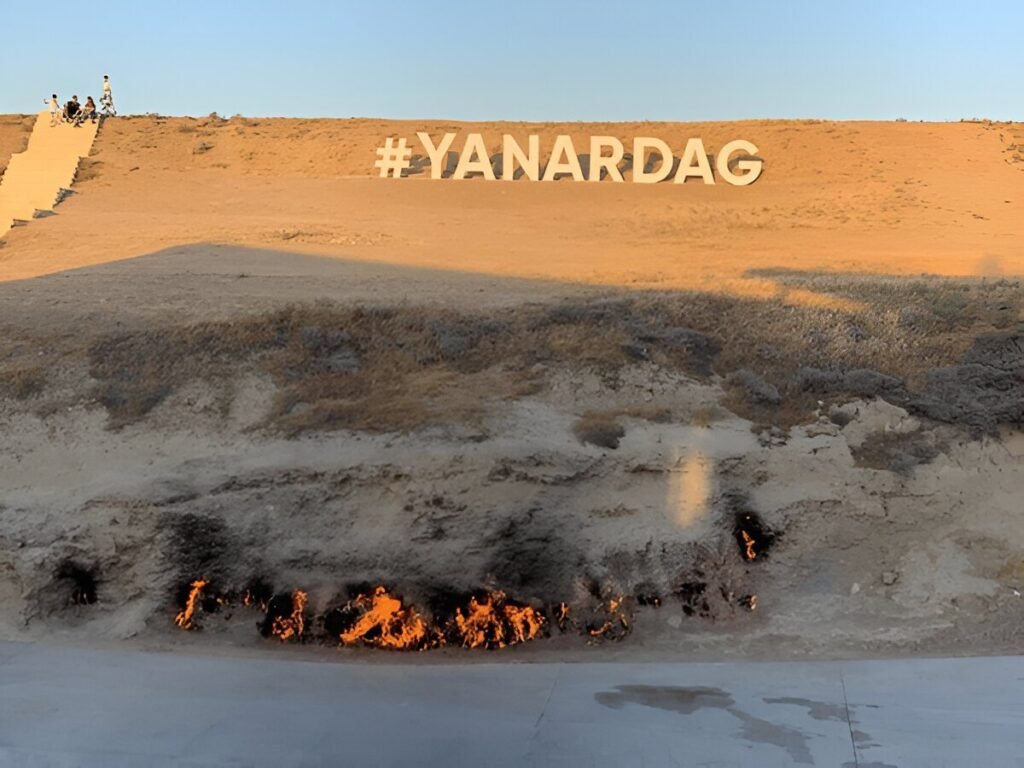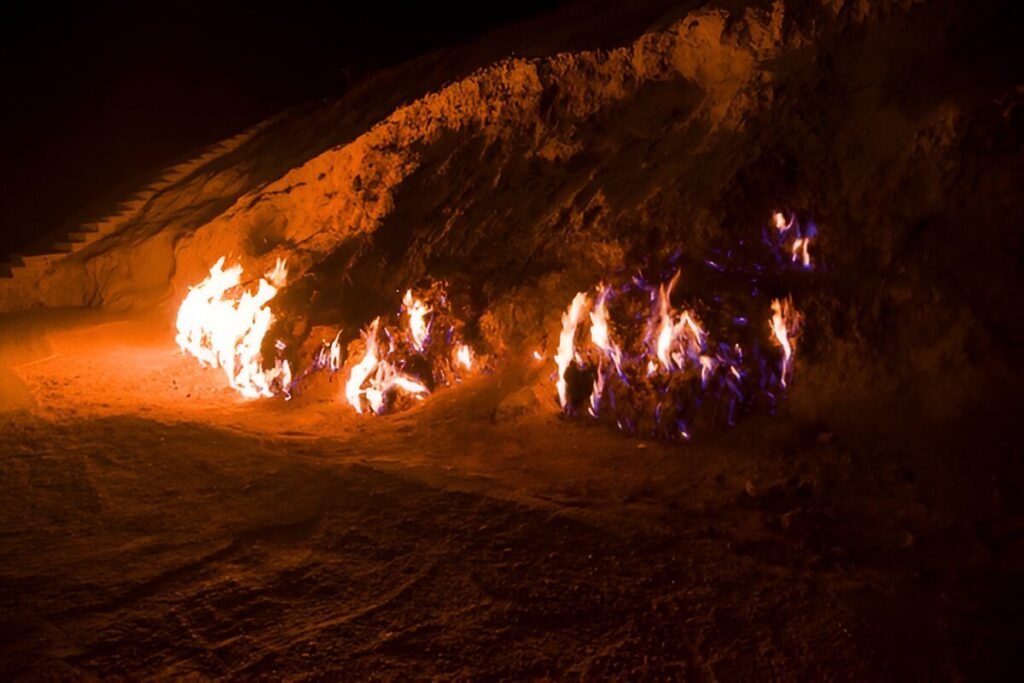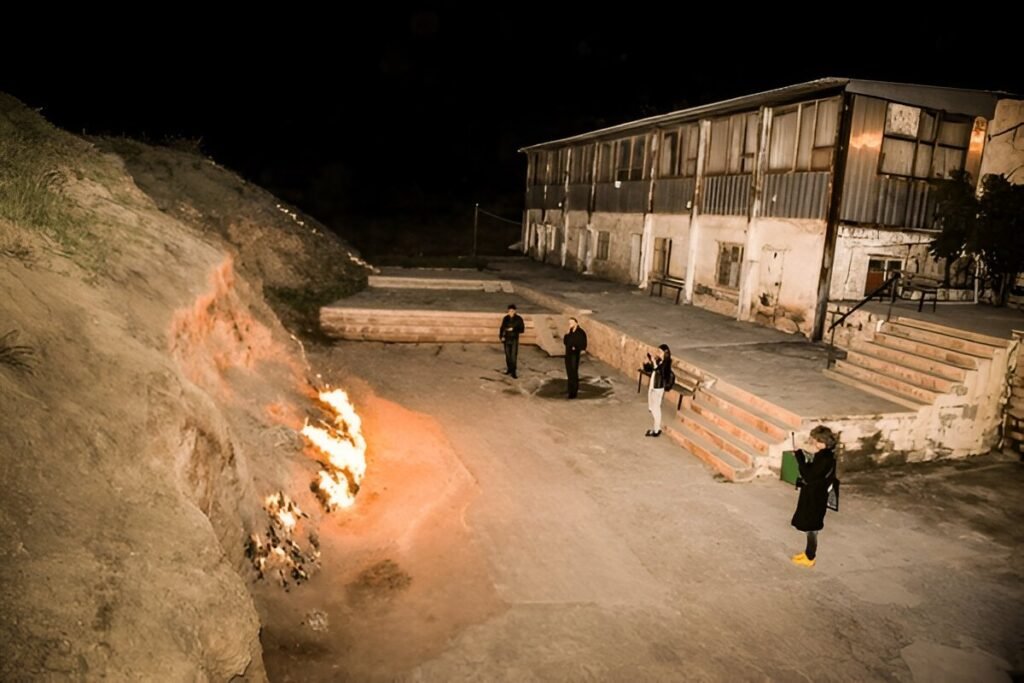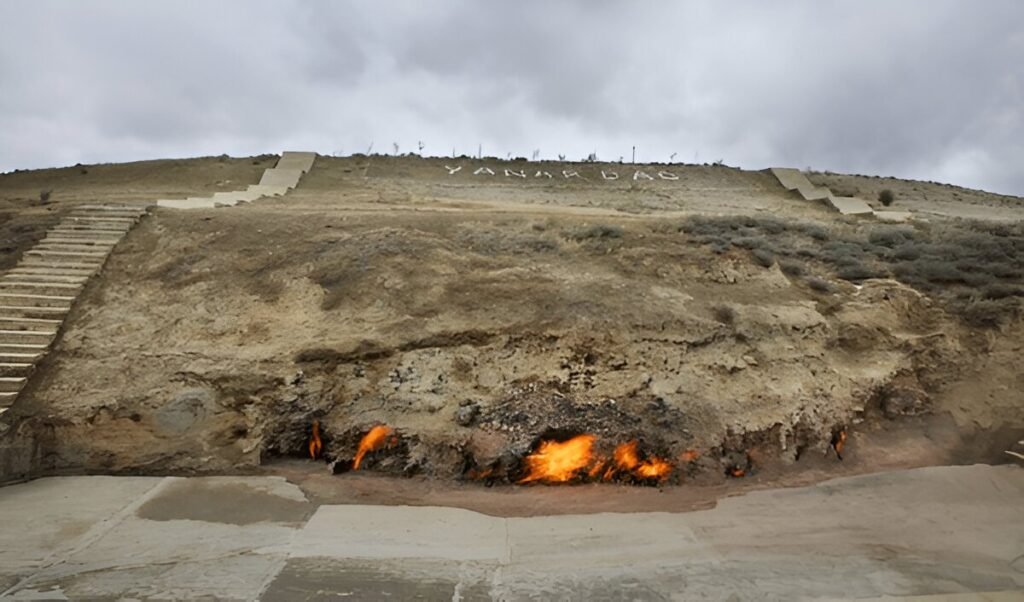Introduction
Situated just 25 kilometers north of Baku, Azerbaijan’s capital, lies one of the most extraordinary natural wonders of the country—the Burning Mountain of Yanar Dag. Known for its ever-flaming fires that have been burning for centuries, Yanar Dag is a mesmerizing spectacle and a symbol of the country’s rich geological and cultural heritage. Visitors flock to this fascinating site to witness the surreal sight of flames leaping from the mountainside, creating an awe-inspiring display that has earned Yanar Dag a reputation as one of the most unique natural phenomena in the world.
In this article, we will delve into the natural causes behind this fiery mountain, its historical significance, and how Yanar Dag continues to captivate the imagination of travelers and locals alike. We will also explore the cultural and spiritual importance of the site, as well as the best ways to experience this remarkable natural wonder.
The Origins of Yanar Dag
The story of Yanar Dag begins deep beneath the surface of Azerbaijan’s rich landscape, which is famous for its abundant reserves of natural gas. Yanar Dag, which translates to “Burning Mountain” in Azerbaijani, is part of a region known as the Absheron Peninsula, an area that has been shaped by intense geological activity over millions of years.
The flames that burst from the slopes of Yanar Dag are fueled by natural gas deposits that are trapped beneath the earth’s surface. Over time, the gas has found its way to the surface through small fissures in the rock. Due to the high concentration of gas in the area, the exposed surface ignites spontaneously, creating the continuous fire that has been burning for centuries.
Geologists believe that this phenomenon began thousands of years ago, but the fires have been particularly prominent and consistent in recent history. Yanar Dag has become a symbol of Azerbaijan’s natural wealth, with its flames serving as a reminder of the country’s rich energy resources.
The Natural Phenomenon of Yanar Dag

One of the most fascinating aspects of Yanar Dag is the fact that the fire has been burning non-stop for as long as anyone can remember. The flames are not the result of any human intervention; rather, they are a purely natural occurrence. The fire burns continuously, day and night, without the need for any external fuel source. The flames dance and flicker along a 10-meter stretch of hillside, reaching up to several meters in height, depending on the intensity of the wind and the flow of natural gas.
The fire creates a mesmerizing visual display, particularly at night when the glow of the flames is visible from miles away. The scene is even more dramatic when the wind picks up, causing the flames to ripple and sway, giving the mountain an almost mystical, otherworldly appearance. In daylight, the fire is still an impressive sight, but it takes on a more subdued glow as the sunlight illuminates the surrounding landscape.
The temperature of the flames varies, but in general, the heat generated by the fire can be felt even from a distance. Visitors to Yanar Dag are often surprised by the intensity of the heat, especially when standing near the flames. Despite this, the fires are not dangerous for those who approach them with caution, as the flames are confined to specific areas where the natural gas escapes from underground reservoirs.
The Geological Significance of Yanar Dag

Yanar Dag’s continuous burning flames are not just an eye-catching natural spectacle; they are also a testament to the region’s unique geological characteristics. Azerbaijan is located within a region known as the Caspian Basin, which is home to some of the largest oil and gas reserves in the world. The area’s complex geology has given rise to the formation of numerous natural gas fields, many of which are located just beneath the surface of the Absheron Peninsula.
Yanar Dag’s flames are a direct result of these vast underground gas deposits, which are trapped in porous rock formations. When the gas finds its way to the surface, it ignites in the presence of oxygen, creating the natural flames that have been burning for centuries. The geological conditions in this region are ideal for the formation of such natural fires, with the right combination of underground gas reservoirs, fissures, and heat sources.
The fact that these fires have continued uninterrupted for so long is a clear indication of the region’s rich energy resources. Yanar Dag is just one of several fire mountains in Azerbaijan, with other sites such as Gaval Dash and Ateshgah also displaying similar natural gas-powered flames. Together, these sites offer a unique glimpse into Azerbaijan’s geological history and the ongoing energy resources beneath the earth’s surface.
The Cultural and Spiritual Significance of Yanar Dag
For centuries, Yanar Dag has held deep cultural and spiritual significance for the people of Azerbaijan. The continuous flames have been viewed as a symbol of eternal fire, and the site has been an important part of the region’s religious practices and beliefs. Historically, the fire at Yanar Dag was considered sacred, and it is believed that the Zoroastrians—an ancient Persian religion—once considered the flames of Yanar Dag to be a manifestation of the divine fire. Zoroastrianism, which was one of the world’s earliest monotheistic religions, centered around the worship of fire as a symbol of purity and the divine.
In ancient times, people would travel to Yanar Dag to make offerings and seek spiritual solace. The site’s reputation as a place of healing and spiritual power persisted for many years, and it remains a place of significance for local residents today. Even though Azerbaijan is now predominantly Muslim, elements of the ancient fire-worshipping traditions can still be seen in the reverence with which locals approach the site.
Yanar Dag’s continuous flames also serve as a reminder of the power of nature and the interconnectedness of the world’s energy systems. The fire has inspired poets, artists, and travelers for generations, and the site has become an integral part of Azerbaijan’s national identity. For many locals, the sight of the burning mountain evokes feelings of pride in the country’s natural resources and cultural heritage.
Visiting Yanar Dag: How to Experience the Burning Mountain

Yanar Dag is easily accessible from Baku, making it a popular destination for both locals and tourists. The site is located just a short drive from the city, and there are several guided tours available that offer transportation to and from the site. Once visitors arrive, they can explore the area around the burning mountain, enjoying the dramatic views and learning about the natural phenomenon from knowledgeable guides.
For those seeking the best experience, it is recommended to visit Yanar Dag in the evening or at night, when the flames are most visible and the atmosphere is truly magical. Visitors can take photographs, watch the fire dance across the hillside, and enjoy the peaceful surroundings of the Absheron Peninsula. There are also several small cafes and stalls around the site, where visitors can enjoy traditional Azerbaijani snacks and drinks while soaking in the unique atmosphere.
Conclusion:
Yanar Dag is a place of natural beauty, geological wonder, and cultural significance. The sight of its eternal flames leaping from the mountainside is an unforgettable experience that captivates visitors from all over the world. Whether you are a nature lover, a history enthusiast, or someone simply looking to experience the magic of Azerbaijan’s landscapes, Yanar Dag offers a unique and mesmerizing encounter with one of the world’s most extraordinary natural phenomena.
The burning mountain continues to be a symbol of Azerbaijan’s natural wealth, its energy resources, and the rich cultural traditions that have shaped the country’s history. A visit to Yanar Dag is more than just a chance to see a remarkable geological wonder—it is an opportunity to connect with the spirit of Azerbaijan itself.












